Fujifilm X-S20 Review: Making the Case as the Best Camera Under $1,500
We finally did it! We reviewed the Fujifilm X-S20 after a very long wait. I fell in love with the original X-S10 when it first came out because it represented a departure from the design stylings of Fujifilm. It also added IBIS to the camera at a price that created excellent value for the dollar. Now the new X-S20 is in our hands, and we take it through its paces.

Fujifilm X-S20: How it Handles
The $1,299 X-S20 looks almost identical to the older X-S10 save for some extra settings on the mode dial. At first touch, I did notice that the buttons feel more refined. Slightly stiffer to the touch with a more raised profile, the buttons are noticeably nicer to use. What made the X-S10 so enjoyable were the three command dials — I prefer it to the more classic dials on the XT series of cameras. The X-S20 also has this same setup and I especially like the third dial which can be customized to do ISO, white balance, or many other options.
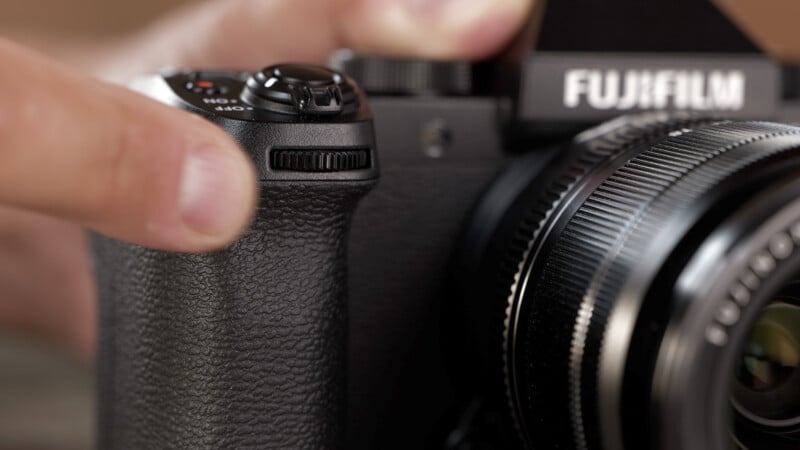
The small autofocus joystick is still present, which although small, is nonetheless functional. The grip of the camera is very comfortable, with a slightly wider profile to accommodate the new larger W-235 battery. With 750 CIPA-rated shots and many more than that in real use (CIPA ratings on mirrorless cameras are always well under real-world expectations), the battery life is way above what one would expect at this price. At only 17 ounces with the battery and memory card included, the X-S20 is still very lightweight.
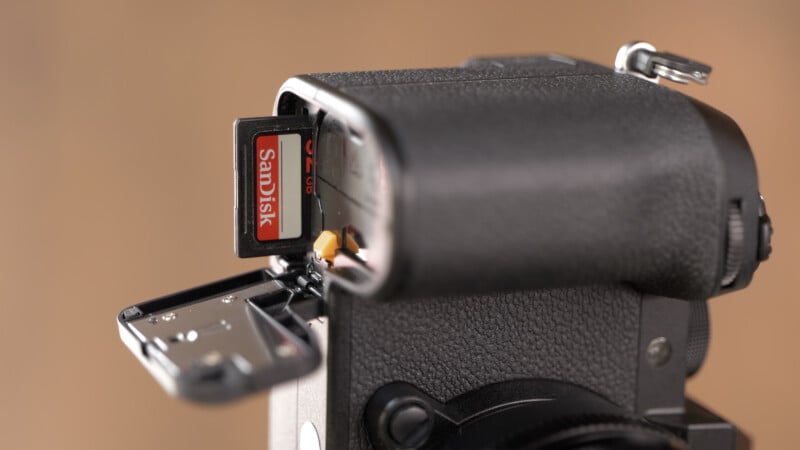
On the back of the camera is a 3-inch 1.84 million dot LCD panel. I find this setup fine for photography and prefer it for video, perfect for the X-S20 and its hybrid design. We do still find the same 2.34 million dot EVF on the X-S20. Do I wish it was a higher-resolution finder? Sure. But frankly, the competition in the X-S20s price range also features similar EVFs. It would be unfair to fault it in this way.
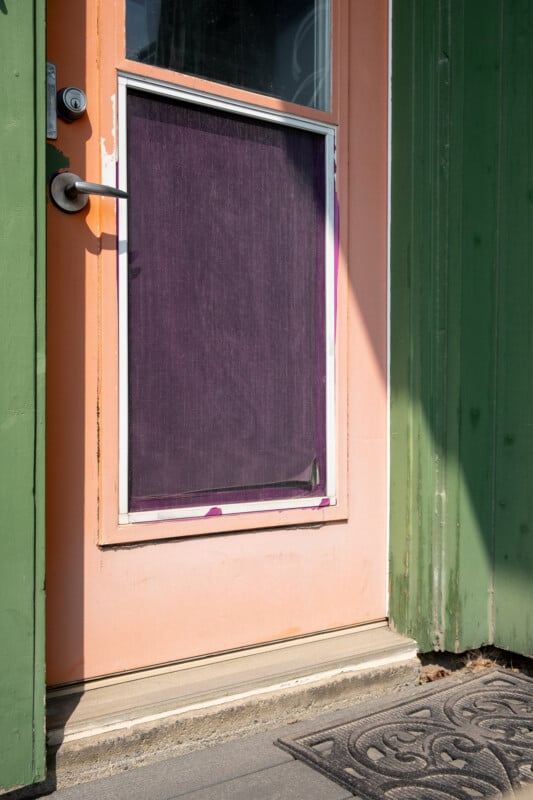
There is still only one SD card slot but it has been updated to the faster UHS-II spec. We tested the RAW burst mode with a fast card and now get around 80 shots at eight frames per second. That’s the mechanical burst rate, which is the same as the X-S10, but now we get a much longer sustained rate of fire. You can still shoot up to 20 frames per second in electronic shutter mode, but the rolling shutter will creep in a bit if the camera or subjects are moving.
Fujifilm X-S20: Image Quality
The X-S20 has the same BSI X-Trans 26-megapixel sensor we’ve seen before in the X-S10, and indeed many of the other Fujifilm bodies. For the price, this sensor is appropriate and is ideal for video applications as well. Because this camera aims to be a capable hybrid camera, I’m happy that we don’t have the 40-megapixel chip in here. As we have seen before, this sensor delivers high-quality images, with good dynamic range and lovely colors.

Something which aids the camera in taking good images is the IBIS or in-body image stabilization. This was a huge selling point for the X-S10 but now Fujifilm has upgraded the system to provide seven stops of stabilization. Considering the modest price increase of the new X-S20, this new IBIS system is a positive selling point.

Fujifilm is famous for its Film Simulation modes, and the X-S20 has the whole lot. Added is the Nostalgic Neg mode, which is a personal favorite of mine, adding rich warm tones to the color palette, and a more classic contrast level.

Fujifilm X-S20: A Boosted Processor
Although the sensor is the same old 26-megapixel chip that we’ve seen many times before, the processing power of the X-S20 has improved. We also get all the new subject-detection modes, so beyond the effective eye-detect modes, we get animals, planes, trains, and automobiles. The latest autofocusing algorithms certainly improve the X-S20s hit rate.

Tracking mode still needs a bit of work to be more consistent but it’s certainly usable. I do also wish that human/eye subject detection was found in the same menu entry as the other subject detection modes. It’s a little clunky to go into a subject like animals for example, and then have to exit from that and turn on eye-detect in a different menu entry. So much so, that I usually customize a button to turn on eye-detect so that I can force it on without having to go menu-diving.

Of course, a new processing unit also has big benefits when it comes to video so let’s tackle that subject next.
Fujifilm X-S20: Video Capabilities
Fujifilm has upped the X-S20s video abilities in a big way. We essentially get much of the good stuff from the XT-4 which wasn’t available in the X-S10. You can now shoot 4K 60p video, even in 10-bit to wring out even more dynamic range from the sensor. Through the albeit flimsy micro HDMI port, you can now record B-RAW or ProRes RAW out to an external recorder in 6.2K.
One of the most exciting additions is a powerful feature from the XH2S; 6.2K open-gate recording using the entire sensor. It’s possible to shoot up to 30 frames per second in this open-gate mode, and it gives you a powerful ability to recompose your video after the fact or to go from horizontal to vertical compositions without sacrificing too much resolution.
The F-Log 2 profile has also been added which gives an even flatter profile to grade with. It’s not quite giving the same dynamic range as you’d find on the X-H2S stacked sensor but it’s still a nice touch. The choice of sticking with the older 26-megapixel sensor is a sound one because of its relatively fast read-out speed. This helps to minimize rolling shutter issues and also allows for shooting video modes up to 30P without cropping into the sensor. There is a small crop in 4K 60P but it’s manageable.
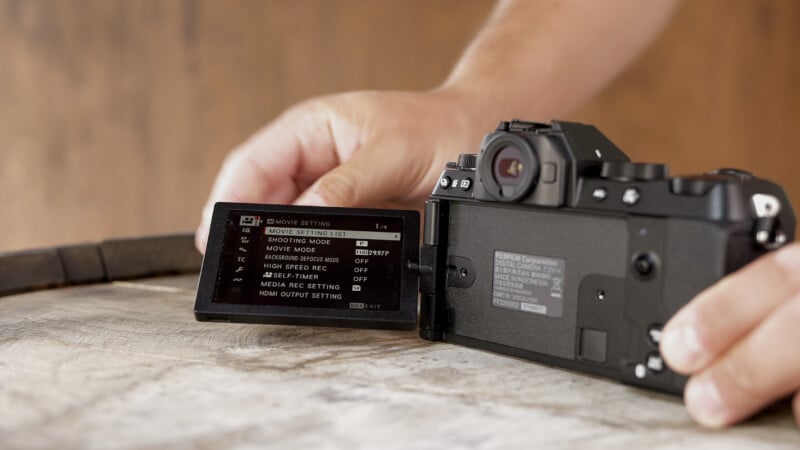
Debuting on the X-S20 is a VLOG setting right on the mode dial which unlocks very beginner-friendly controls for the new creator. This unlocks easy touchscreen controls whilst holding the camera in a classic vlog orientation. There is also a background defocus option which simply forces the widest aperture possible to be used with your current lens. There is even a product focus assist tool much like the now famous Sony design, which maintains focus on the presenter but quickly shifts to any product held in front, and then back to the presenter again when the product is removed.

The IBIS unit helps to stabilize your video as well, and there is an additional digital stabilization that can be used at the cost of a 1.1X crop factor. Although the stabilizer is great to have, we find that in video there is still a fair amount of shaking, and wobble, even with the digital stabilizer turned on. For handheld shots trying to keep the camera steady, the stabilization works great. It’s only when moving the camera, or vlogging for example, that things get a little jittery.
The camera can overheat depending on the mode you choose to shoot and this was tested at room temperature with appropriate cool-down times in between. In the most demanding 6.2K open-gate mode we clocked a time of 34 minutes. In 4K 60P, the overheat time was similar at 36 minutes. These are certainly usable durations but would be an issue if you wanted to record longer events without stopping. However, in 4K 24P, the camera recorded for over two hours. So essentially no issues with overheating using common frame rates, but things get hot when pushing the camera beyond 30P.
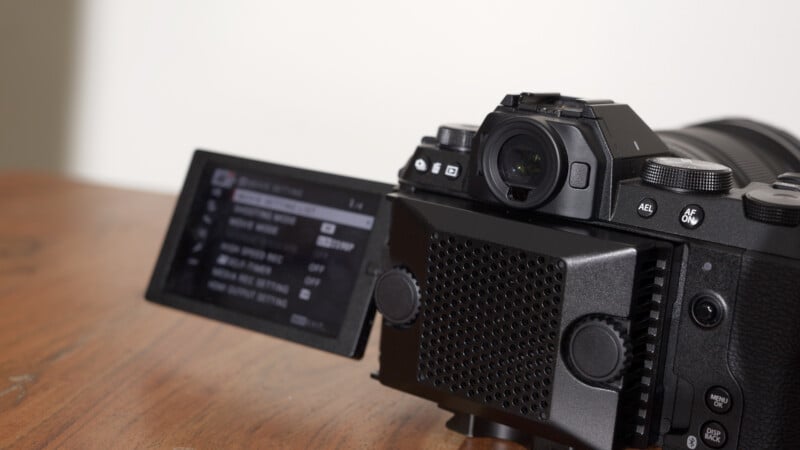
Hang on though. Fujifilm offers an optional, proprietary fan cooling unit that fits the X-S20. With the fan attached the X-S20 recorded in its 6K open-gate mode for well over an hour and could easily keep going. If you need extended record times in open-gate or 60P modes, the fan unit absolutely works.
Fujifilm X-S20: An All-Rounder for the Ages
The X-S20 benefits from so many upgrades, both for photo and video applications. Although the displays are unchanged, everything else has been improved, with strong emphasis placed on the video features. The X-S20 has become a very powerful hybrid camera but still retains what made the X-S10 such a great camera. Value for the dollar is very high with the X-S20, and it is truly a Jack-of-all-trades. If you want versatility and affordability, look no further.
Are There Alternatives?
The Canon EOS R7 sports excellent ergonomics and an even higher resolution sensor, but it’s not going to be able to compete in the video game against the X-S20. Dedicated photographers should take a good look at the R7 for sure, but hybrid shooters might do better elsewhere.
The Sony a6700 has just hit the market and is an excellent alternative. With a similar sensor and class-leading autofocus, it is a strong contender. Although the ergonomics of the Sony line of cameras have improved lately, I’d give the handling edge to the Fujifilm X-S20.
Should You Buy It?
Yes. The Fujifilm offers versatility at an excellent price. On top of that, it’s a real pleasure to use.